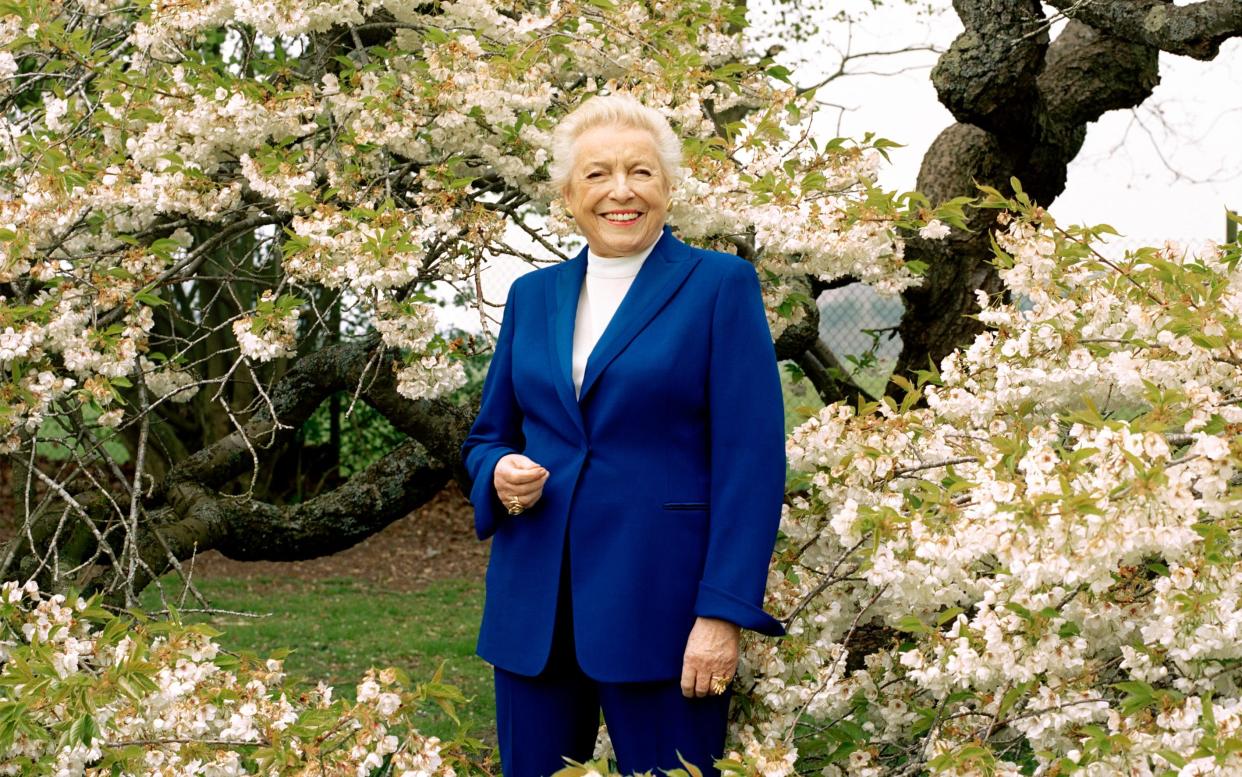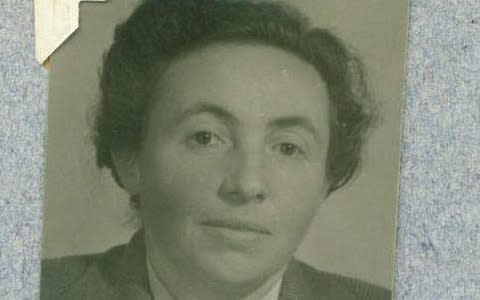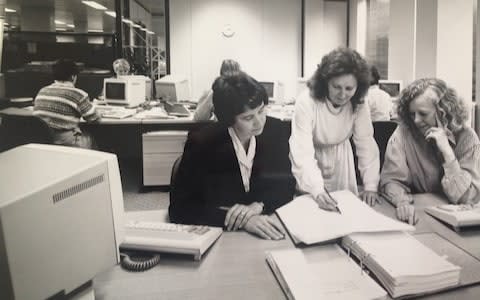The 85-year-old tech entrepreneur who made her staff millionaires

She fled the Nazis, became a tech tycoon, fought 1960s sexism, gave £70 million to charity and funded new research into autism. Dame Stephanie Shirley’s life sounds like a movie…and now it’s set to become one. Here she tells Zoe Beaty why
It is hard to sell software when you’re having your bottom pinched. It is hard to sell software when you walk in a room and the men you’re meeting assume you are there to make their tea.
When I set up my company, people laughed – they sniggered and chuckled to themselves, and rarely said much at all to my face. Perhaps, looking back, it gave me fuel – I was a 29-year-old woman who hadn’t been to university, who’d arrived in Britain as a refugee from Nazi Germany, who was mother to an autistic child, who was working in technology in the 1960s, as the only woman. I didn’t much like to be patronised. I’d had enough of that as a Jew.
I didn’t mean to become a feminist – the term used to be considered very ‘anti-men’, which I couldn’t abide. Is this a peculiar thing to say in 2019? I suppose it might be considered so by some. But the world was very different in 1962 when I started my business, Freelance Programmers, which later became FI and then Xansa.
I had my first taste of male-dominated spaces as a teenager when I was sent to a boy’s school (the only place that could satiate my appetite for mathematics; girls weren’t expected to find passion in such subjects). My first job had been working in computing at the Post Office Research Station in Dollis Hill where there were two pay scales – one for men and one for women. It was quite normal at the time but an atrocious thing nonetheless.
I started my software company from my living room with just £6. I decided to employ mainly women – only three of the first 300 staff were men – and we operated entirely on flexitime to ensure they could work around raising a family. But I wasn’t coming from a feminist perspective. I was just trying to make our working lives easier.
Even now, surveys on what women want from their employers always come up with two things: work/life balance and flexibility. For us you could work part-time, freelance, take a job share. You could do annualised hours, min-max hours, have a zero-hours contract (I know those contracts are very unpopular now but they did work well for us in those early days).
If anyone had asked if they could bring their dog to work we would have said yes. (They didn’t.)

It was a very different approach – one that brought us attention, and some ridicule. The Times, for instance, began to call us the ‘computer birds’. My letters to important industry leaders were equally ridiculed – ignored, over and over, until, at the suggestion of my husband, Derek, I stopped signing them with my real name (Stephanie Shirley – a double-whammy of femininity) and became ‘Steve’, a family nickname.
Soon enough, the replies rolled in. I still use and love that name to this day – more than Stephanie, and especially than my birth name, Vera. In some ways I think I wanted to reinvent myself in part – maybe I still do. It takes me back to those purest of creative days. As the company grew, we learnt fast how to manoeuvre through a male-centric world. Our ‘house style’ for clothes worn to meetings was strictly skirts (though I now live in trousers) so as not be too masculine around the men we met with.
When potential clients called my ‘office’, at home, and heard my baby son crying in the background they were put off, so I developed a strategy: I recorded one of my employees, Barbara, typing, and played the recording down the phone to create the illusion of a busy office.
Still, we were very careful not to butt heads with men already in powerful positions. It just wouldn’t have worked. And equality had been something that I’d come to care about long before, perhaps, in part, due to my own experience.
I was five years old in 1939 when my mother packed me up with my favourite doll, along with my big sister, nine-year-old Renate, on to the Kindertransport from Vienna to London. We became two of the 10,000 Jewish children whose parents sent them away to avoid persecution by the Nazis, 10 months before the outbreak of the Second World War. I remember the childish things: a little boy vomiting; the frightening uniformed guards; little tickets with numbers hanging around our necks.
Two and a half days later we pulled into Liverpool Street Station. I had lost my doll somehow, and I’m told I howled all the way to my new home with Guy and Ruby Smith – a childless couple who had answered a little advertisement in a local paper asking if anyone could give us a home – in Little Aston in Staffordshire. We called them Auntie and Uncle.

I was disturbed by the whole thing rather than frightened. They were good people even though they didn’t speak German and we didn’t speak any English. Our new life was very different to my affluent childhood back in Germany, where my father had been a judge.
We were very short of money and it was a very sheltered; I don’t remember ever reading a newspaper. One day I heard on the radio that black people were demanding the rights they are entitled to. Suddenly I became more conscious of inequalities in the world. On the bus, I watched Auntie publicly chastise a white man verbally abusing a black woman and I started to get a sense of what was right and what was wrong.
I find it interesting that today’s refugees and migrants – who are so many, in such vast numbers, after suffering such horror – do not seem to get the same welcome as I did. As child refugees we arrived and were assimilated here. Now compare that to the way children are received today.
I’ve read that the areas of this country that are very much against migrants and refugees are the ones that really do not have much experience of them. Of course there are many caring people, but there is a fear of the unknown – another language, a different race or colour or culture.
All those things were different for me, too. What’s more, just after I arrived in the UK, perhaps I was around six years old or so, I was continually told by very nice, well-meaning people, ‘Aren’t you lucky to be here?’ For a small child to realise how close they had been to annihilation is not terribly healthy.
I lived with the Smiths on and off until I was 18. I was one of the few Kindertransport children whose parents survived and also made it to England. A few years later, I saw them – separately as they had divorced – but our relationship was never the same. Marred by the past, perhaps.
Eventually my father moved back to Germany and remarried. My mother and I endured a difficult relationship that softened as she aged. Not enough to stop her striking me out of her will, mind. I think she would be proud of me now, nonetheless.

I’d decided early on that what I wanted to do was make a difference. I studied for six years, taking evening classes, to gain a degree in mathematics, working my way up through my first role at the Post Office, moving to a technology firm – CDL Ltd, the designers of the ICT 1301 computer in 1959.
By 1962 I had met and married my husband, a physicist, through work. We lived modestly – our honeymoon was in a hotel in Egham, Surrey – and money was tight. (As a rough idea, my first job had paid me £215 per year. The months seemed very long back then.) Shortly after our wedding, I left full-time work – I had new ideas to pursue.
That same year I founded Freelance Programmers and, slowly, my business started turning, even if it was against the tide – at that point, in the 1960s, women couldn’t legally drive a bus or even open a bank account without their husband’s permission.
Plus, selling software at fixed prices, when it had previously come packaged with the computer hardware, was initially deemed ludicrous – until big contracts, such as programming the scheduling of freight trains, began to roll in. It was my team that programmed Concorde’s black box flight recorder.
In 1963, my son, Giles, was born. He was a happy little baby, a true bundle of joy who arrived following a series of miscarriages. I was happy as a new mother and the first couple of years were blissful. Then, aged two, Giles stopped talking. We were told he had severe autism – something that, in his early years especially, the world and our circles knew very little about.
Giles became increasingly demanding – by the time he was 10, violent, unpredictable rages were par for the course. Autism is marked by characteristics such as difficulty in social interaction and communication, though it’s important to note that everyone with autism is different and affected by the condition differently. Giles needed increasing amounts of care, especially when at the turn of puberty he developed epilepsy.
His moods worsened and he needed more care than ever before. Parenting was, sometimes, pretty grim and balancing this with a full-time job meant, at times, everything got too much. I began experiencing panic attacks and was eventually hospitalised with stress. The situation looking after Giles at home had, doctors told us, become unsustainable and when he was 13, we had to move him into a home.

I felt guilty. I knew that children and young adults like Giles need more than just people around. They’re so vulnerable. And the care wasn’t good enough – I remember being told that Giles was drinking water out of the toilet; somehow this was accepted and no one stopped him doing it. When he was in his early 20s, I brought him back home and decided to take matters into my own hands. In 1986, I set up the Shirley Foundation to pioneer projects in the field of autism.
I am a proud person so, despite the chaos, I didn’t tell anyone what was happening. Instead I focused my public life into realising my next dream – for the FI, as it was known by then, to become a co-owned by the staff, inspired by the likes of John Lewis. It took 11 years to do it.
When I retired in 1993, aged 60, having given the large majority of my stake – almost £30 million-worth – – to the staff we employed, I’d reached my goal. It was my biggest act of philanthropy and I made 70 employees millionaires in the process; an amazing feeling. By then the company’s expertise had shifted to business and technology consulting, business-process and IT outsourcing. I had been becoming less involved in the running of it and by the time I left the board I got the impression that I was much less needed. I’m not going to say it felt good but it was, perhaps, right.
The FI Group made a lot of money. At its peak, I was worth £150 million – the 11th richest woman in the country. Expansion over the decades meant that, even by 1996 as the dot-com boom continued, my wealth had increased by millions of pounds each year without me ever lifting a finger. I didn’t mind making money as a reward for working. But doing nothing at all after a lifetime of 80-hour weeks, I felt this was faintly obscene.
I valued money and my position, of course. I didn’t ever want to feel the insecurity of poverty again and I knew that Giles could be cared for long after Derek and I had passed away. But there was something missing, especially after retirement, so we decided to invest more time and money into setting up proper care for people like Giles, who was by then a young adult in his mid-20s. Through the Shirley Foundation we bought properties and worked on developing and managing educational housing for autistic young adults. It wasn’t straightforward in the beginning. The Prior’s Court building we bought for a school cost £15 million – plus renovation costs and start-up losses, it came to more than £30 million.

But we started to see changes in the pupils. I remember a little girl who seemed to grow physically each week. I asked staff what on earth we were feeding her. They explained that, within just a few weeks, her posture – once hunched over – had completely transformed. She was standing tall. And Giles had been happier too living in his care home, The Cuddy, also part of our charity. Until one day in October in 1998, when our lives changed instantly. I was at home when I got the phone call to say that Giles was dead. He’d suffered a severe epileptic episode.
Parents who have lost a child will understand what I felt and what I still feel. I envy the rest of you your ignorance. Even now, more than two decades on, I find it difficult to talk about, though I think of Giles most days. He has a birthday coming up. I think of him with love, but realistic love – not passionate or sentimental love. With practical, enduring love. I pour it into our legacy, now.
And our legacy is still growing. Our first charity, Autism at Kingwood, is a support service helping over 150 adults with autism. We also developed Prior’s Court residential school for 70 autistic pupils in Thatcham, Berkshire, as well as a Young Adult Centre that trains 20 youngsters aged 19 to 25 in life skills. In all I have three charities, which all do important work in the field of autism. I have something to do; something to get up for and work for each day.
I’ve also donated my wealth to projects I believe in, such as the Oxford Internet Institute, a research project analysing the veracity of information online, and to the Worshipful Company of Information Technologists. So far I’ve given away around £70 million, I think. And my efforts have been rewarded too: I’ve had honours from multiple universities, a damehood and, more recently, in 2017, I was made a Member of the Order of the Companions of Honour for services to IT and philanthropy. I admit that I found myself crying when I received that award. Crying is not something I do often.

I’m proud of what I have achieved. But when people look at me and read about my life, I think that they are, in some ways, misled – with any entrepreneur we always focus on the successes; failure is rarely spoken about and I’ve had many. I failed in America, I failed in parts of Europe and it wasn’t all as straightforward as it seems. I have few regrets, though – perhaps just not having any other children. It was a conscious decision we made so that Derek and I could concentrate on the child that we had, because of his needs.
My life now, at 85, is very different from that of most of the people I know, but I get a lot of happiness from my philanthropy work. I used to be very depressed and the only known antidote to depression is compassion – humans are born with an instinct to give – and this has helped me enormously. And, because of it, a film is being made about my life, for which filming will start at the end of this year.
I’ve seen some of the scripts and it does seem quite unreal that this film, about me, an eternal outsider – that’s how I see myself, anyway – will come to be made. They’re taking bets on who will play me – Kate Winslet, is apparently in the pipeline, or Emily Blunt. Who knows? I think it’s going to be rather special, actually.
Let It Go, by Dame Stephanie Shirley, is published by Penguin Books, £9.99. Buy it for £8.99 at books.telegraph.co.uk or call 0844-871 1514


